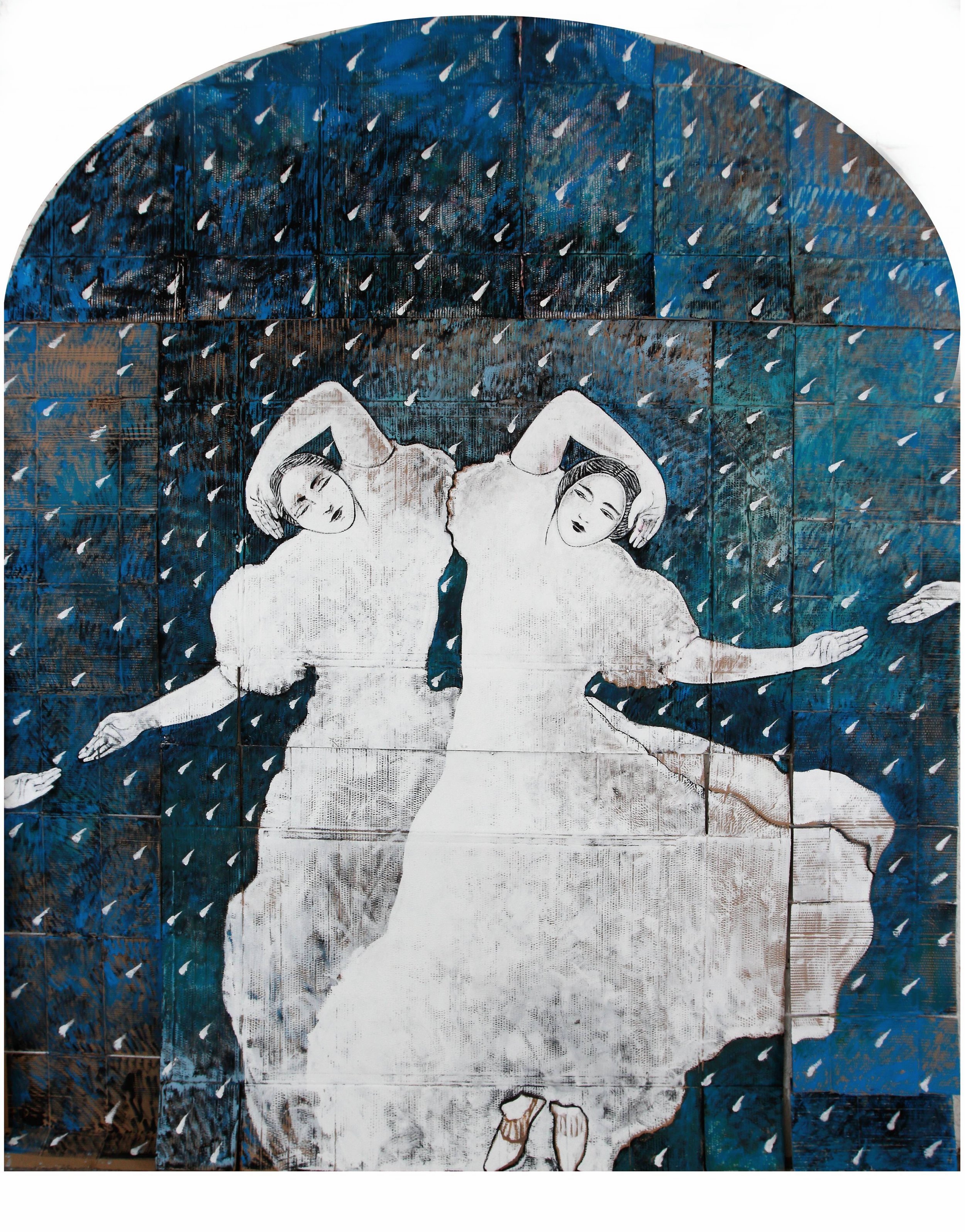Affresco Su Cartone:
Sofia Cacciapaglia (Italy)
Essay by Lana Meador, Associate Curator of Modern & Contemporary Art, San Antonio Museum of Art
Opening June 13, 2024
Reception June 13, 5-7 pm
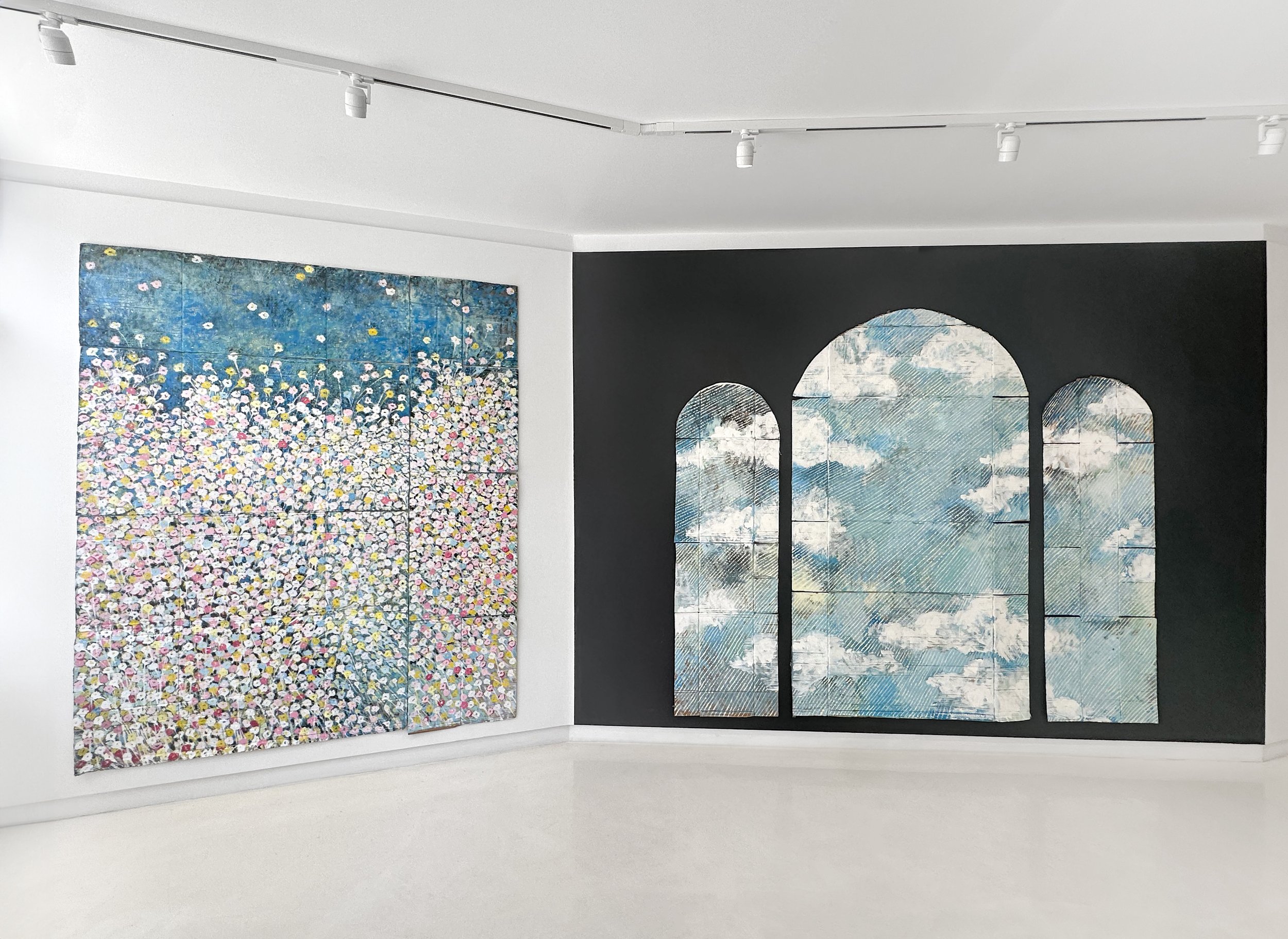
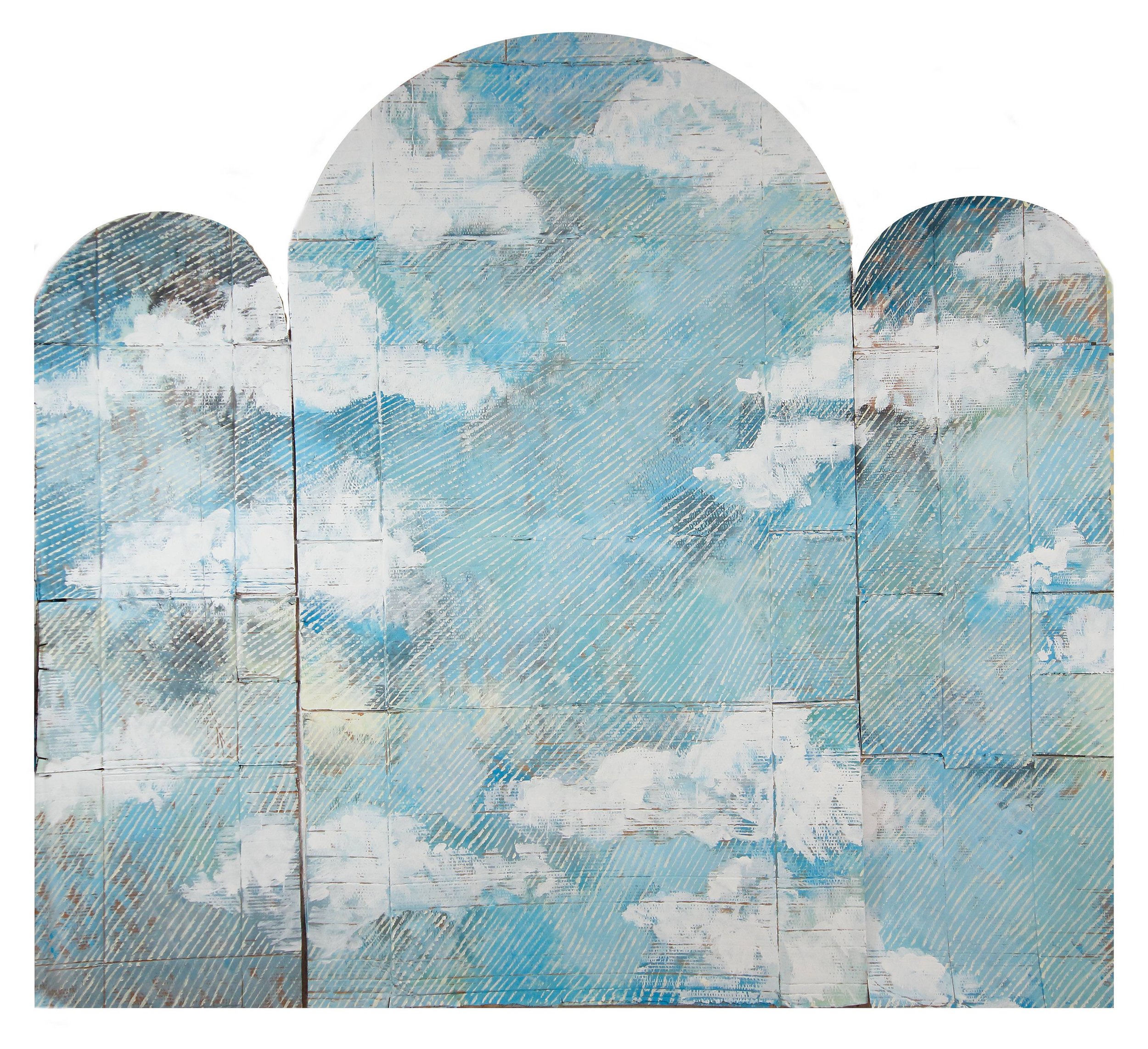

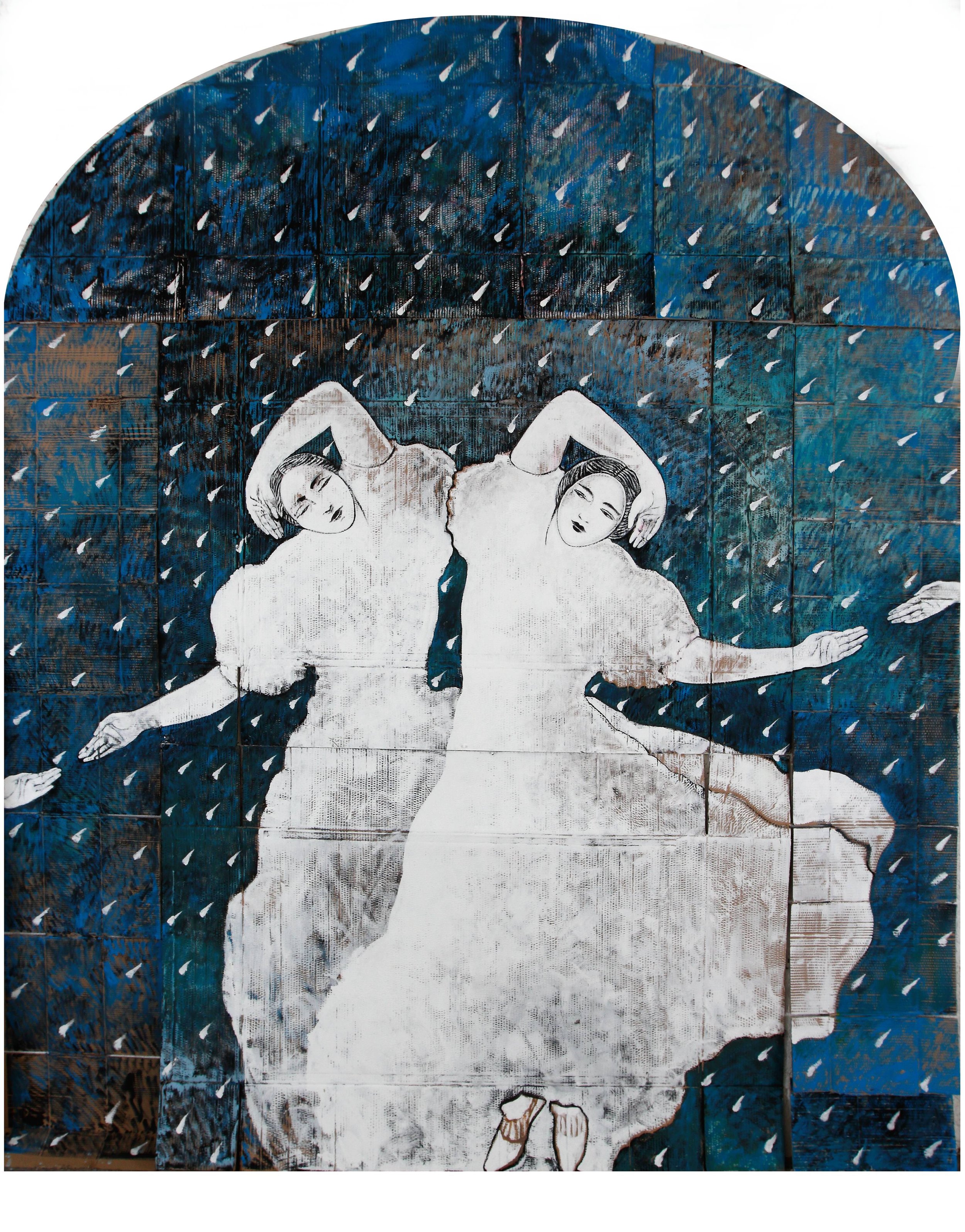
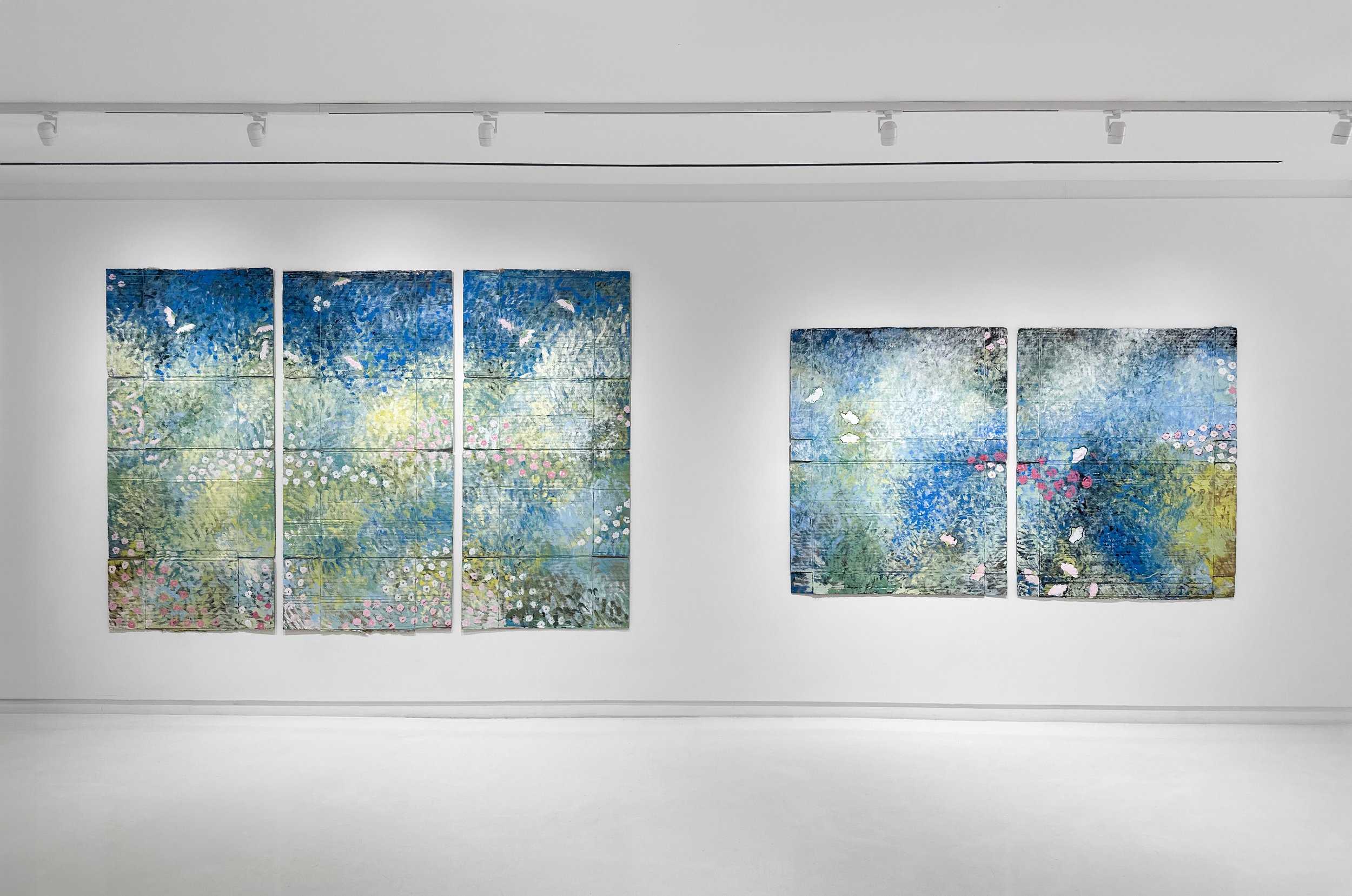
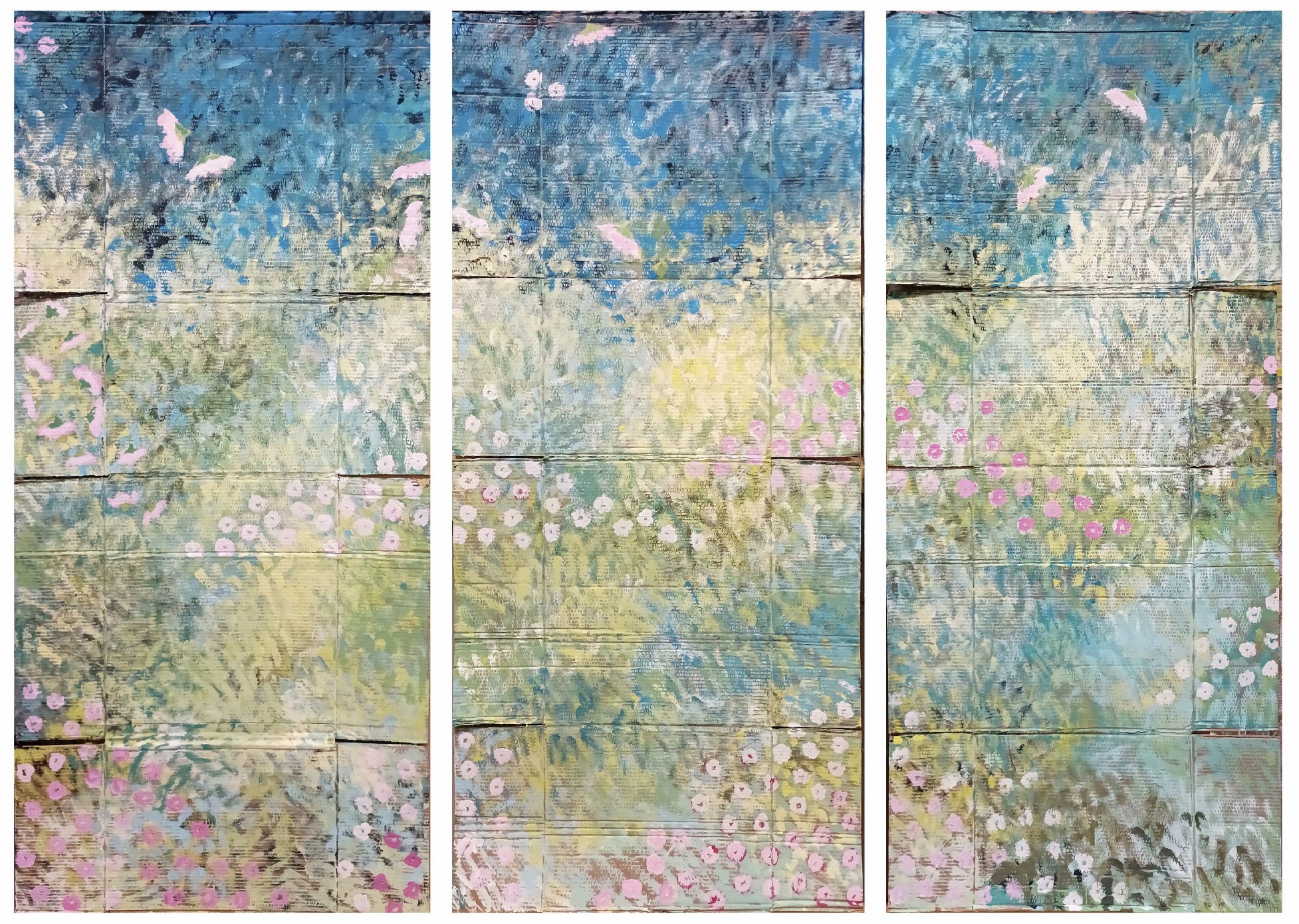

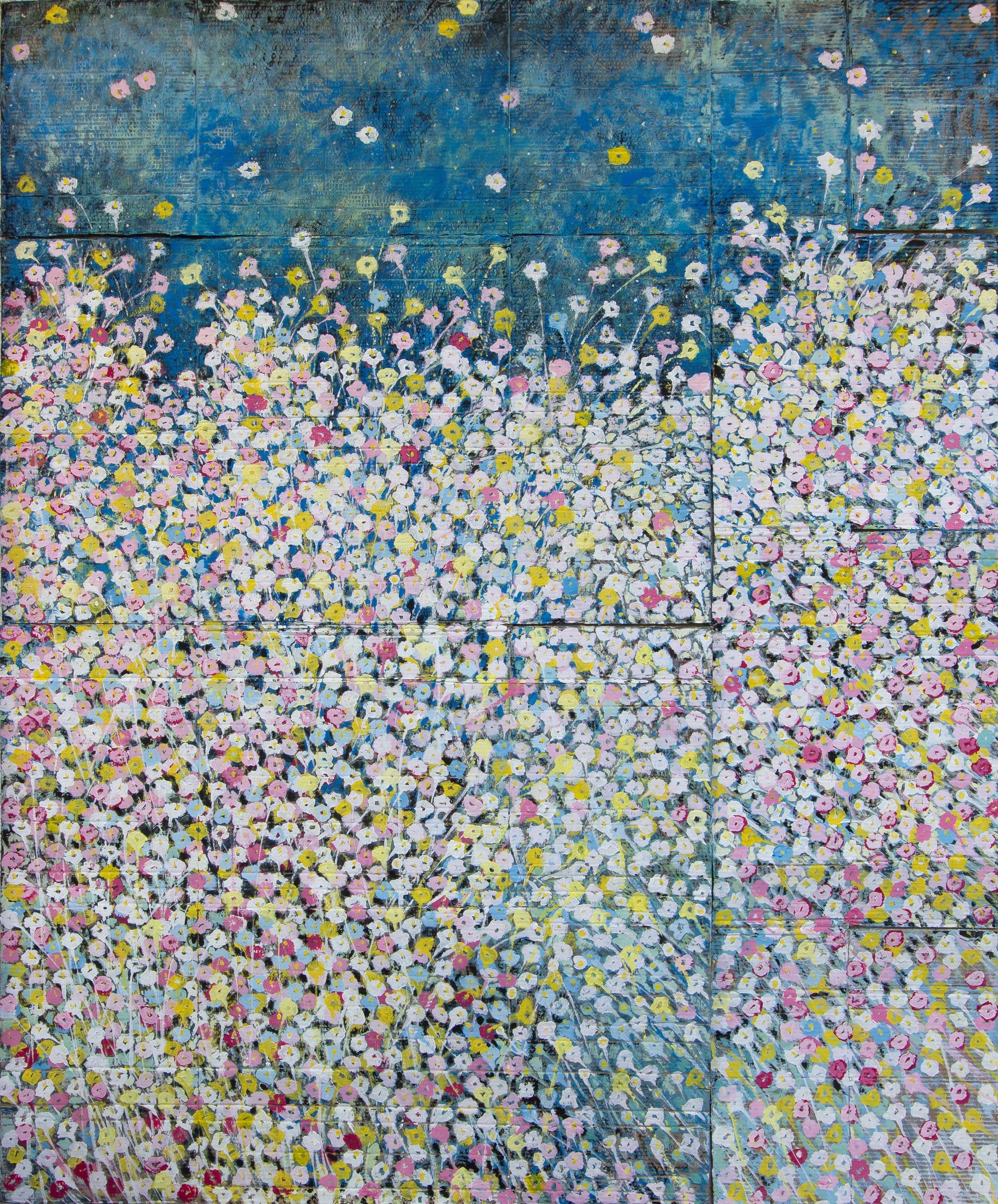
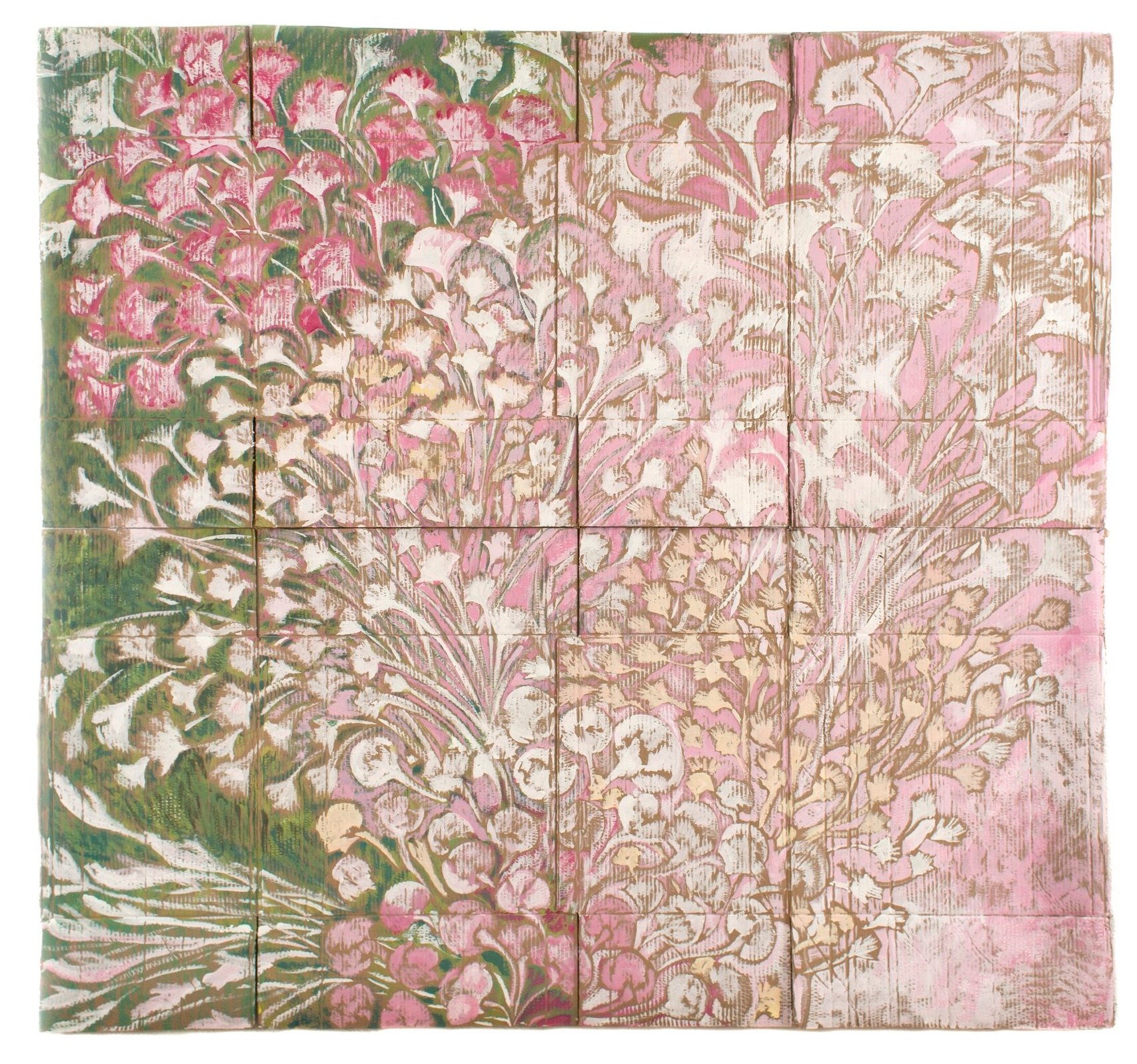
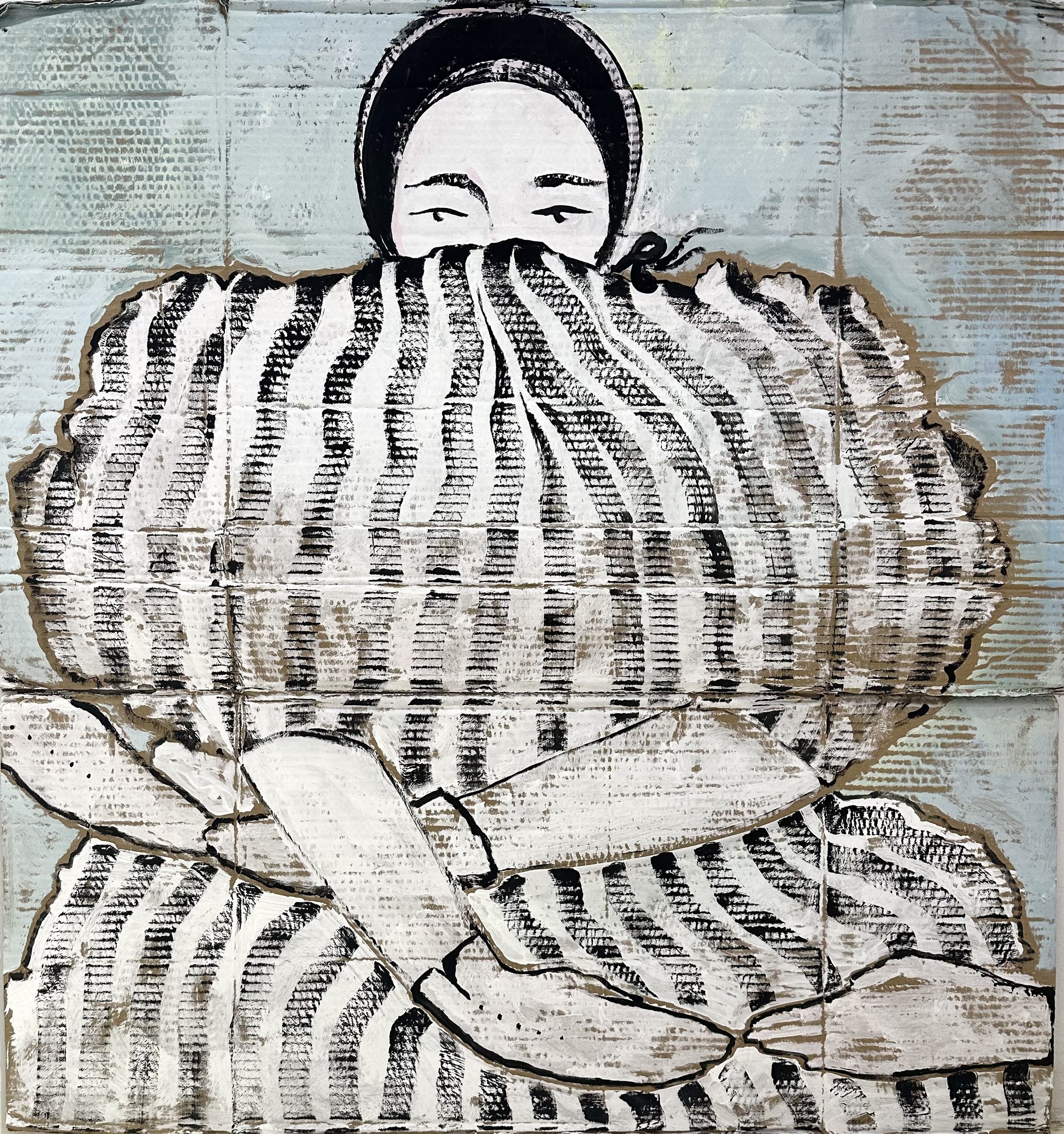
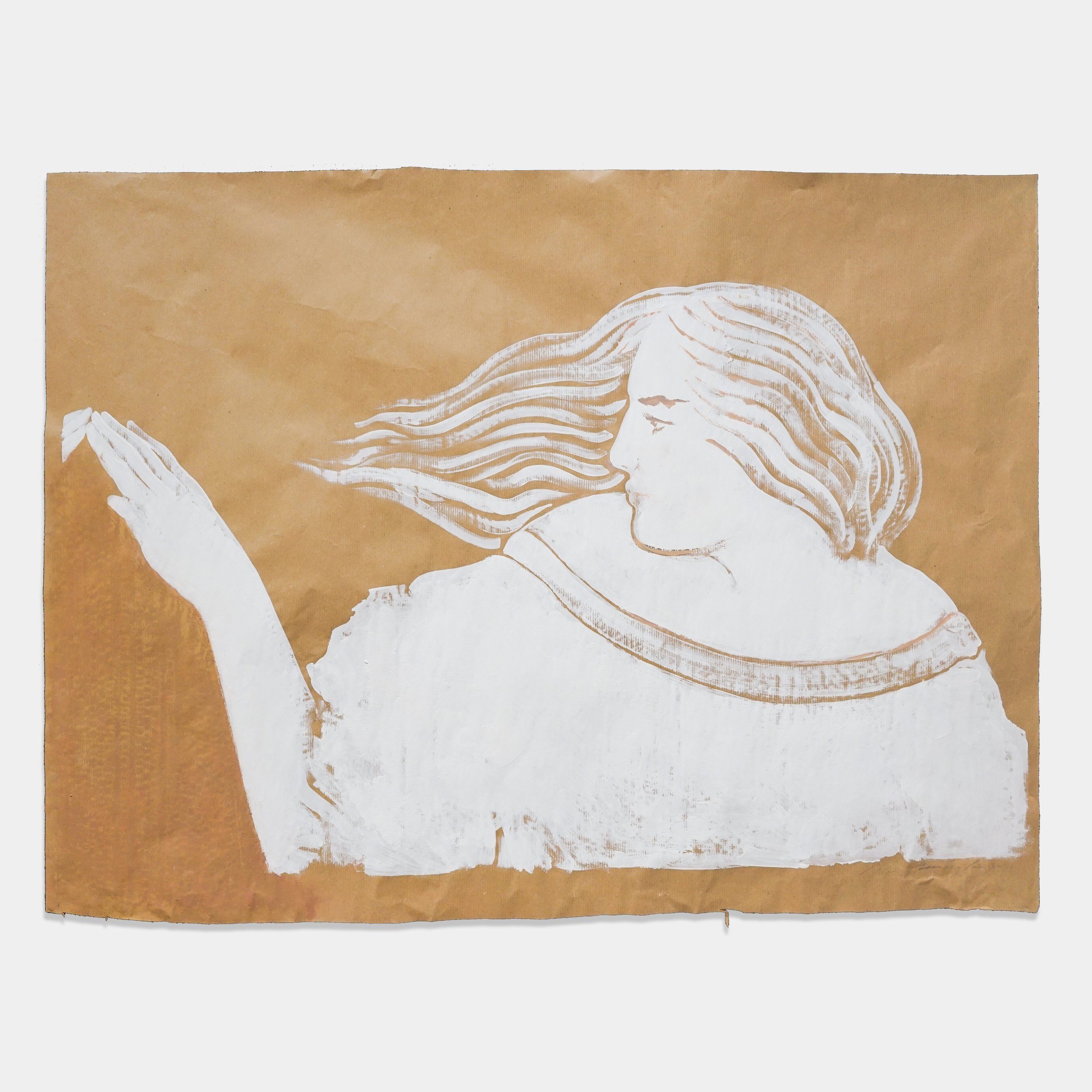
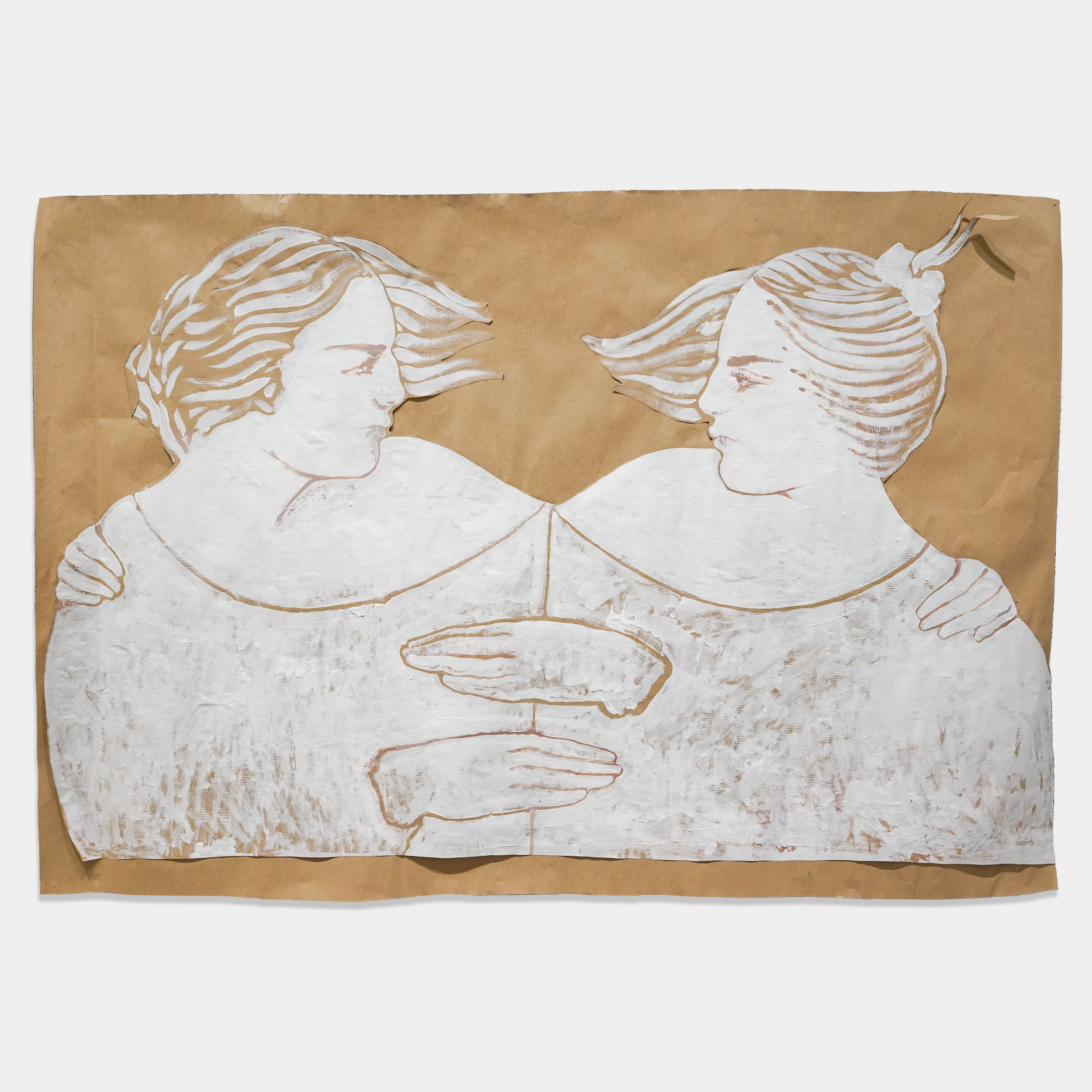
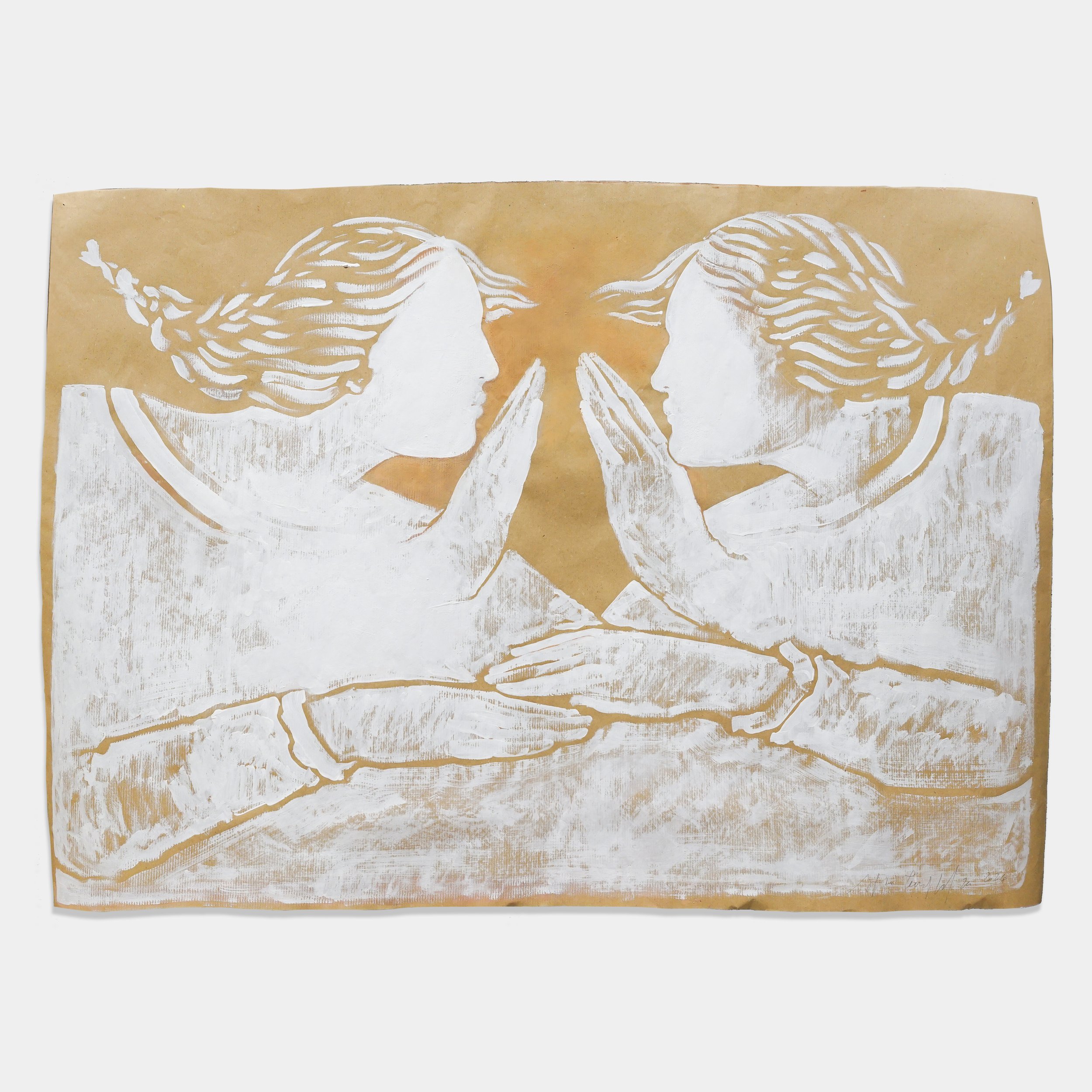
Sapar Contemporary is thrilled to present the second solo exhibition by Italian artist Sofia Cacciapaglia titled Affresco Su Cartone (Fresco on Cardboard). One of Cacciapaglia’s favorite materials is discarded cardboard boxes which she transforms into monumental landscapes and figurative paintings that are akin to classical frescos in their scale and paint application. The choice of cardboard and recycled packaging paper is also tied to the artistic and social roots of Italian arte povera. In our modern age of ecological anxiety, Cacciapaglia's floral and figurative works speak directly not only to the cycles of life as a meditation on nature, but also offer a the vision of environmental rebirth.
Essay by Lana S. Meador Associate Curator of Modern & Contemporary Art, San Antonio Museum of Art
Sofia Cacciapaglia is a bit of an alchemist. She transforms carboard boxes and packaging paper—inexpensive materials meant to protect precious goods during transit—into prized possessions unto themselves. Take, for instance, Affresco su Cartone: Ottobre 2021 in which cardboard is repurposed into a soaring triptych. Flattened out, the boxes’ volume has been eliminated and forms elongated into three vertical supports on which Cacciapaglia has applied acrylic paint in a series of dynamic daubs and strokes. The effect is an idyllic flower garden reverberating with color and light. While her painterly approach may call to mind Monet’s impressionistic gardens, Cacciapaglia’s work is deeply rooted in her Italian heritage evoking ancient Roman wall painting as much as the Arte Povera movement of the 1960s.
Her studio is based in Milan, but Cacciapaglia has spent each summer of her life in her family home in Sicily. She finds inspiration in the ancient mosaics of the Villa Romana del Casale near the Sicilian town of Piazza Armerina. Cacciapaglia’s figurative works suggest the villa’s renowned mosaic of female athletes, often referred to as “The Ten Maidens” or the “Bikini Girls.” Set against a white nondescript ground, the Maidens appear in two rows, frieze-like, in various acrobatic poses. Similarly, Cacciapaglia’s women inhabit a nonspecific, timeless space and the weightless gestures of their arms and hands recall the Maidens’. In both instances, the figures demonstrate an ethereal quality through a lightness achieved in tone and movement. Cacciapaglia speaks of Sicily’s “blinding and total light of midday, which moves the viewer,” and becomes strikingly present in her work.
Cacciapaglia is also engaged with the ancient Roman tradition of wall painting. The exhibition’s title, Affresco on Cardboard, references the process of painting on wet plaster, while the term affresco also signifies ‘fresh,’ a quality echoed in the rawness of Cacciapaglia’s materials and the immediacy of her forms. Just as ancient frescoes were integrated into the architecture of Roman houses and villas, several works in Cacciapaglia’s exhibition take on architectural scale and the form of archways. Paintings of lush gardens in Roman residences created a locus amoenus, Latin for “pleasant place,” as do Cacciapaglia’s. The artist explored this concept to its fullest in the 2019 installation (titled Locus Amoenus) for which she adorned her studio walls from floor to ceiling with verdant flora on her signature cardboard support. This immersive environment was in dialogue with expansive room-sized garden paintings like those found at the Villa of Livia (wife of Emperor Augustus) at Prima Porta. Dated to the late 1st century BC, the paintings once decorated the walls of a subterranean room with an illusionistic garden view—including twenty-five identifiable plants and nearly seventy birds and insects—and offered a cool refuge during the summer heat. Cacciapaglia’s paintings, however, deny illusionistic perspective and instead embrace simplified forms to imbue her subjects with an archetypal quality—inhabiting the past, present, and future simultaneously.
It is no coincidence that the examples of ancient Roman art cited in this essay come from villas of Roman elites. The juxtaposition of such privileged spaces with Cacciapaglia’s use of simple cardboard and packaging paper brings forward issues that concerned the Italian Arte Povera artists during the 1960s, who employed ordinary (“poor”) materials to defy notions of commodity and consumerism. Cacciapaglia began working with discarded cardboard boxes after she noticed them accumulate outside the shops near her studio. Once emptied of consumer goods and dispensed with as waste, Cacciapaglia gives the material new life. She calls attention to her humble support with fluid forms and a judicious application of paint that work in concert with the corrugated boxes’ innate textures and warm brown hue. Every fold and crease of the flattened boxes are apparent as the material holds the memory of its former shape and utility. Some grooves are more pronounced than others, holding deeper memory and a deeper history. The system of creases and folds creates a grid-like pattern, but one that defies the rigidity of modernism. The artist relishes this effect, likening the linear pattern to windowpanes out which the viewer gazes onto a garden. However, the illusion is always tenuous. Flaps of cardboard create gaps and fissures that pull the viewer back to a material reality.
Just as Livia’s underground garden room provided a respite from the elements, Cacciapaglia’s simple materials and eternal subjects create a locus amoenus that offers a respite from our technologically saturated lives and a reminder of the natural world around us. By repurposing excess produced by global commerce and consumerism, she calls attention to the impact of our presence. In Cacciapaglia’s hands, these cast-off materials are resurrected and given new vitality—and with that, perhaps, hope for a deeper consideration of the environment and our place in it.
About Artist
Sofia Cacciapaglia was born in Ponte dell’Olio, Italy in 1983. She studied Fine Art at the Accademia di Belle Arti di Brera in Milano where she graduated in 2006. After graduating she moved to New York in 2007 and had her first solo show at Industria SuperStudio, curated by photographer Fabrizio Ferri. Since then her work has been exhibited in galleries, foundations and museums in Italy, Switzerland, UK and China. In 2011 she became the youngest artist invited to the Italian Pavillon for the 54° International Art Exhibition La Biennale di Venezia. In May 2019, she completed “Locus Amoenus,” her first large 360° installation that covered the walls of her studio with discarded cardboard boxes, which she transformed into a blossoming garden from floor to ceiling. This work brings with it an environmental message, giving the salvaged material a second life through the representation of nature and the rebirth of spring. Cacciapaglia’s paintings are about women. In her large oil paintings, figures live in a suspended, metaphysical world without any reference to reality. The female figures – monumental but also light and ethereal– emerge from the dream world and inhabit an enchanted dimension: they are linked to each other through contact and gazes, by silent dialogues which are at the base of the compositional balance. These women are symbols of a primordial woman. Painted flowers are seen as an expression of happiness and sweetness, like the female bodies. They are often very large and out of scale and dominate the observer in a veiled, magical and immersive way. In her paintings, Cacciapaglia I seeks lightness, harmony, the softness of shapes and colours, but above all mystery and silent contemplation. Apart from canvas, her favorite materials are simple ones such as cardboard and wrapping paper, because of their material structure and their neutral background color which gives the work a poetic vibration.
Lana S. Meador joined the San Antonio Museum of Art’s curatorial department in 2015 and currently serves as the Associate Curator of Modern and Contemporary Art. She has worked on over a dozen exhibitions at SAMA including co-curating Of Country and Culture: The Lam Collection of Contemporary Australian Aboriginal Art (2017) and Texas Women: A New History of Abstract Art (2020). She organized the 2018 retrospective Marilyn Lanfear: Material Memory and in 2023 she curated Gateway: Carlos Rosales-Silva, Pase Usted, a site-specific mural that launched SAMA’s Gateway project series. Lana received her BA in English from The University of Texas at Austin and MA in Art History from Texas Christian University.

